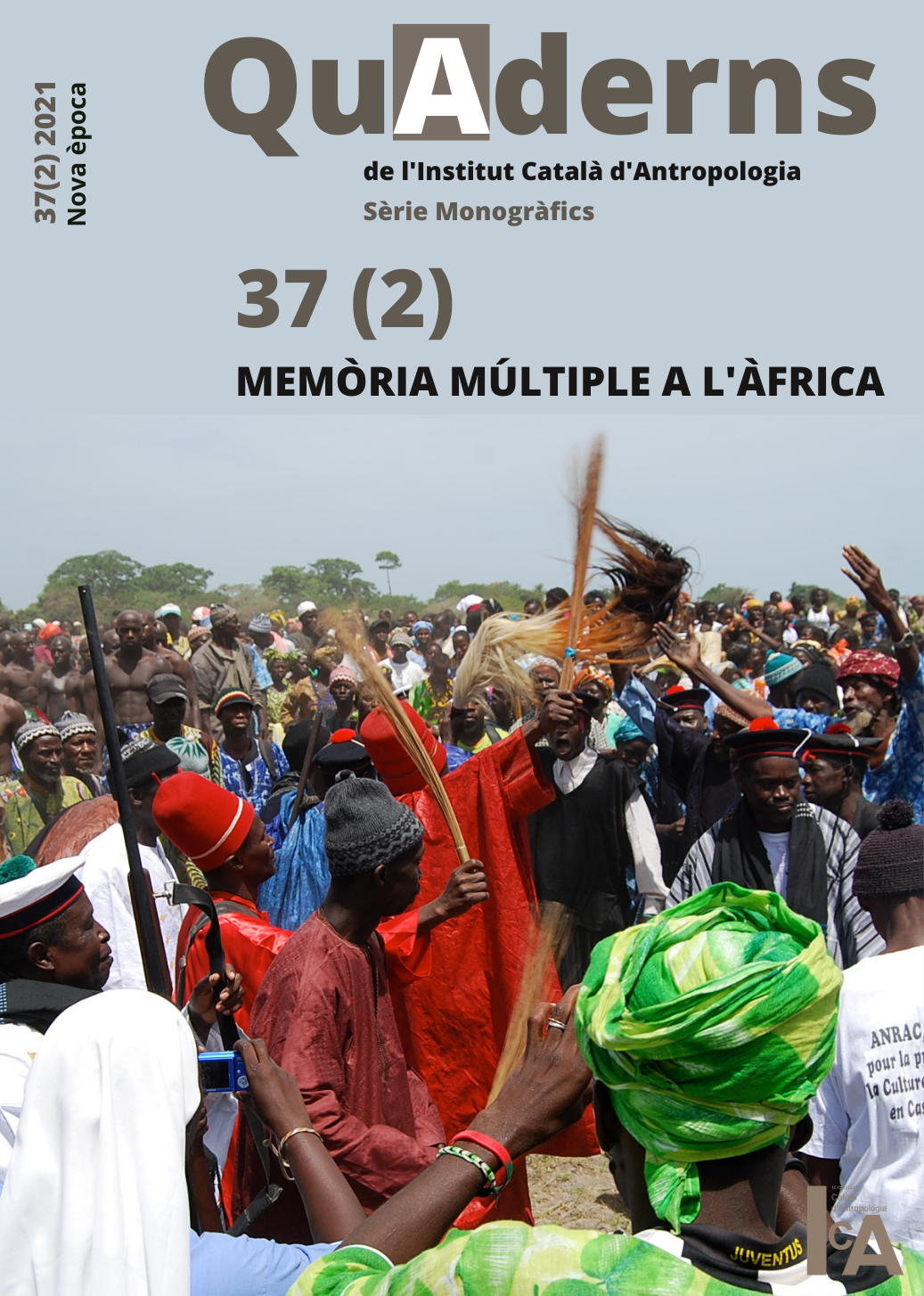Kaabu & Fulaadu: Polyphonic histories and plural pasts
DOI:
https://doi.org/10.56247/qua.369Keywords:
Casamance (Senegal, Africa), oral history, archaeology, multiple memory, participatory methodologiesAbstract
In this paper I consider some of the issues that arise from using multiple and diverse sources to study the past through a musical metaphor. I explore three possible relationships between sources in increasing level of conceptual difficulty (unison, consonance, dissonance) and argue that dissonances should not be ignored or side lined. Instead, a focus on dissonance can often reveal flaws in our conceptual tools and highlight multidimensional processes and historical tensions that lead to more accurate, complex, and richer understandings of the past, as well as a better appreciation of how it is used in the present.
Finally, I argue that it is important to be aware of our privileges as ‘writers of history’ with capacity to choose what voices are given greater prominence in this process, and which are silenced or sidelined; and I suggest a series of measures to mitigate this imbalance.
Downloads
Global Statistics ℹ️
|
383
Views
|
317
Downloads
|
|
700
Total
|
|
References
Alvares de Almada, A. (1964) [1594]. Tratado Breve dos Rios de Guiné do Cabo Verde. LIAM.
Amselle, J.-L. (2011). L’Afrique a-t-elle «inventé» les droits de l’homme? Syllabus Review 2(3), 446-63.
Bertrand Bocandé, E. (1849). Sur la Guinée Portugaise ou Sénégambie Méridionale. Bulletin de la Société de Géographie 11, 265-350.
Burke, P. (2010). Cultural History as Polyphonic History. Arbor 743, 479-486. DOI: https://doi.org/10.3989/arbor.2010.743n1212
Burke, P. (1997). Varieties of Cultural History. Cornell University Press.
Canós-Donnay, S. (2022). Shifting Sedentism in West Africa. Oxford Research Encyclopedia of African Archaeology. DOI: https://doi.org/10.1093/acrefore/9780190854584.013.510
Canós-Donnay, S. (2017). Arqueología de La Alta Casamance, Senegal: Una Primera Aproximación. Dins M. Sahouni, S. Semaw i J. Rios-Garaizar (Eds.) Actas de Las II Jornadas de Prehistoria Africana (pp. 598–622). CENIEH.
Canós-Donnay, S. (2016a). Territories, fortresses, and shifting towns: archaeological landscapes of the Upper Casamance (Senegal), 7th-19th C. (Tesi doctoral no publicada). University College London. DOI: https://doi.org/10.1080/0067270X.2016.1201903
Canós-Donnay, S. (2016b). Shifting sedentism in the Upper Casamance (Senegal). Azania: Archaeological Research in Africa Azania, 51(4), 453-68. DOI: https://doi.org/10.1080/0067270X.2016.1249588
Cissoko, S.M. (1972). Introduction à l’histoire des Mandingues de l’Ouest; l’empire de Kabou (XVIè-XIXè siècle). Proceedings of the Conference on Manding Studies. SOAS.
Cissoko, S.M. (1981). De l’organisation politique du Kabu. Ethiopiques, 29.
Delafosse, M. (1912). Haut-Sénégal-Niger II. Emile Larose.
Donelha, A. (1977). Descriçao de Serra Leoa e dos rios de Guiné do Cabo Verde (1625). Junta de Investigaçoes Científcas do Ultramar.
Fanchette, S. (1999). Migrations, intégration spatiale et formation d’une société peule dans le Fouladou (haute Casamance, Sénégal). Dins R. Botte, J.Boutrais i J. Schmitz (Eds.). Figures Peules (pp. 165–192). Karthala.
Hecquard, H. (1853). Voyage sur la Cote et l’Intérieur de l’Afrique Occidentale. Bernard et Co.
Inwood, J. (2014). Skeletal Analysis Project: Kolda 2013 (Informe no publicat).
Lawson, A. (2003). Megaliths and Mande states: sociopolitical change in The Gambia valley over the past two millennia (Tesi no publicada). University of Michigan.
Lopes, C. (1990). ‘Relaçoes de poder numa sociedade malinké: O Kaabu do séc. XIII ao séc. XVIII. Soronda, 10, 17-26.
Monteil, C. (1929). Les empires du Mali. Bulletin du Comité d’Études Historiques et Scientifiques de l’Afrique Occidentale Française, 6, 291-447.
Niane, D.T. (1989). Histoire des Mandingues de l’Ouest. Khartala. Phillost Almeida, R. (1980). An outline history of Pachesi drawn from oral traditions. Unpublished paper presented at The First International Kaabu Colloquium, Dakar. DOI: https://doi.org/10.3917/kart.tamsi.1989.01
Sidibe, B.K. (1972). The story of Kaabu: its extent. Dins Proceedings of the Conference on Manding Studies. SOAS.
Downloads
Published
How to Cite
Issue
Section
License
Distributed under the terms of the Creative Commons Attribution 4.0 International Use and Distribution License (CC BY-NC-SA 4.0)




